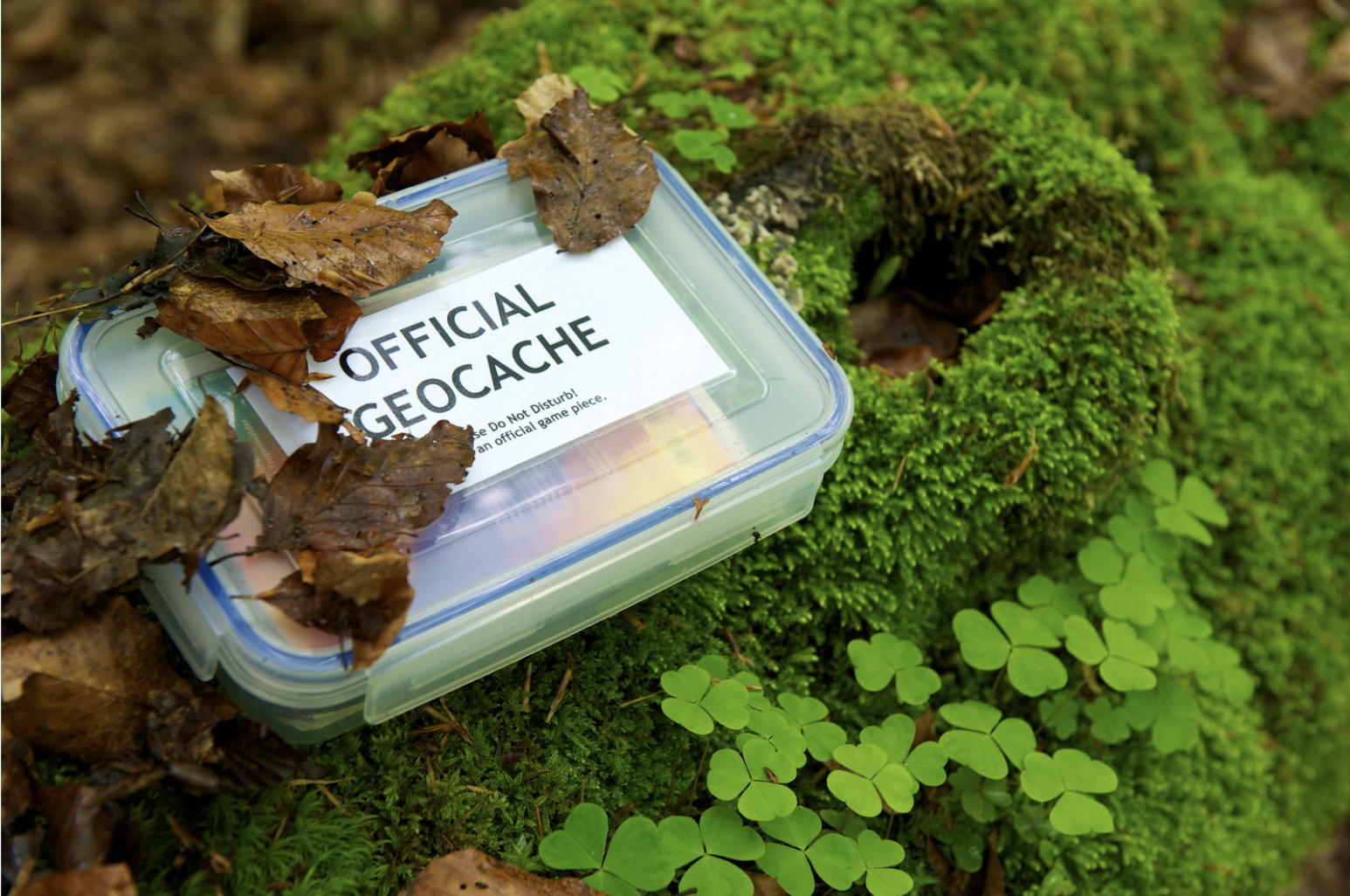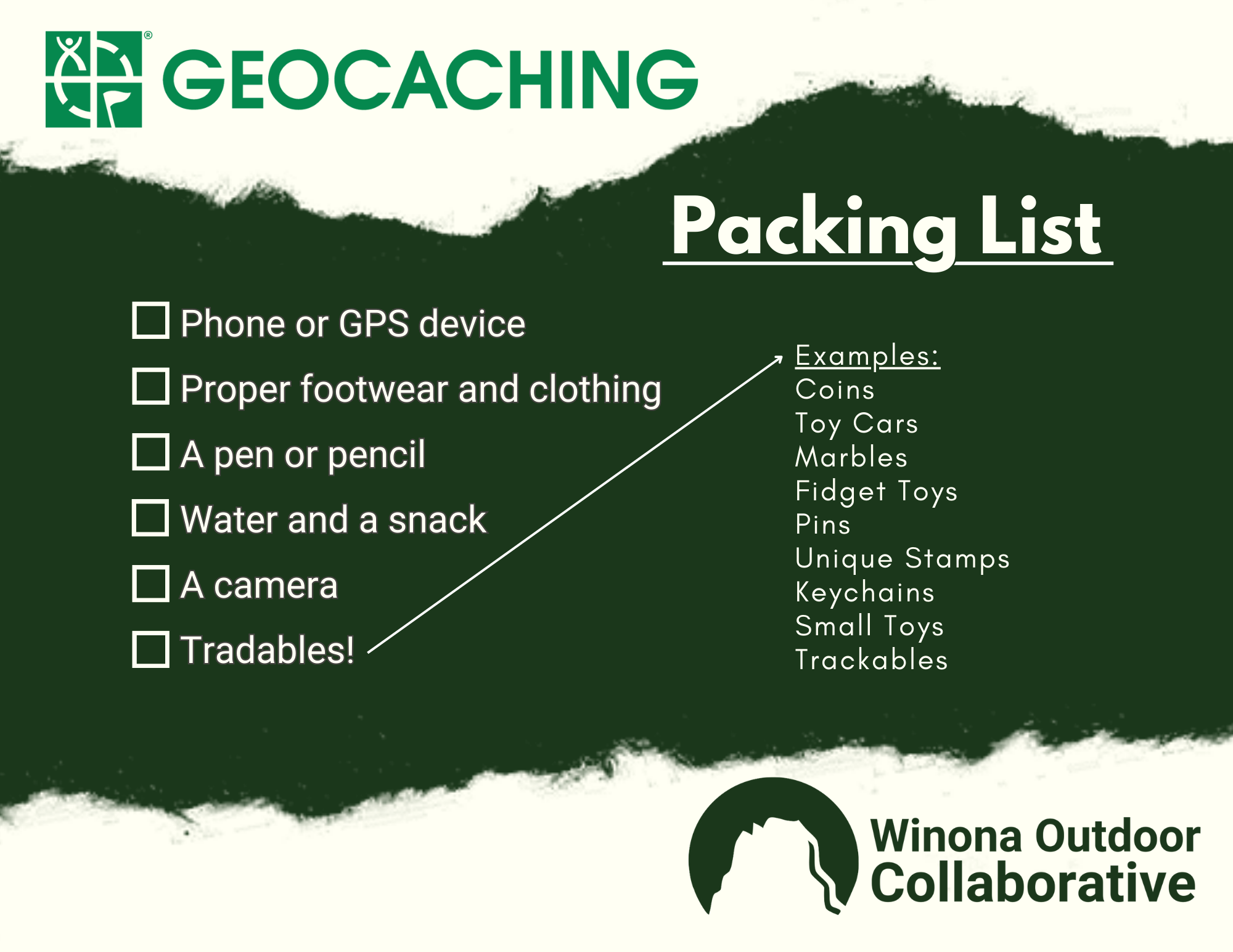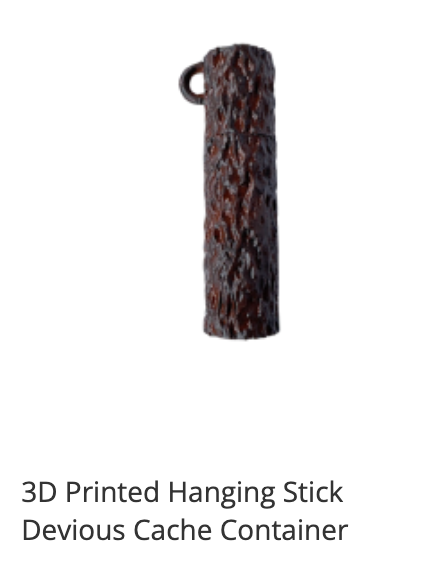Finding Hidden Treasure
Looking for a fun new way to get outside and explore your local city and parks? Search no further! Geocaching is a great way to actively explore and engage with your surroundings. Even if you’ve never heard of Geocaching or if you don’t have any experience using a GPS, this treasure hunt is designed for everyone.
What Is Geocaching?
Put simply, Geocaching is the world’s largest treasure hunt. Put literally, a Geocache is a small hidden container, often holding a Log Book and tradable trinkets. Encouraging a combination of hiking and the thrill of a scavenger hunt, Geocaching is a great way to explore new locations, or just to get outside right where you are. With over 3 million active Geocaches across the globe, the search is endless.
Getting Ready to Hunt
The first step in getting ready to hunt down your first Geocache is to download the app and create an account (you can also hunt Geocaches using a handheld GPS device, but this post will focus on using the Geocaching App). Although there is a paid upgrade, the free version still has access to all of the basic geocaches in and around the area.
Once you have the app downloaded, you will be able to view Geocaches anywhere on the map. To learn more, select a location that sounds interesting. The app shows a difficulty and terrain rating, an approximate size, a description of the location or Geocache, and a log of the Geocache activity.
Most of the Geocaches in the Winona area have a relatively low difficulty and terrain rating, making them perfect to start with. The activity log also shows extra hints and the last time the cache was found.
Tracking Down a Geocache
Geocaching is a relatively straightforward activity. Using the app, select your first Geocache to find, and begin navigating to the general location. Some Geocaches may be a short walk from your front door, but others may require you to drive to a new location.
Once you get to the general location of the Geocache, your real hunt begins. Geocaches are stealthily hidden and can come in a variety of sizes. Most of the Geocaches in Winona are rated “small”. Remember to check out the description and hints to help guide you to where it will be hidden.
Geocaches should not be buried, but they are usually disguised in some way. Just look at some of these examples from the official Geocaching online store. Use your detective skills to look high and low for something that seems out of place. Don’t forget to be respectful of your surroundings and any other visitors.
What To Do Once You Find One
You did it! You found that sneaky Geocache! Now what?
All geocaches will have a Log Book within the container that you can sign and date. Some Geocaches will have a pen or pencil that you can use, but it’s probably a good idea to bring one of your own as well. You can then log in to the Geocaching app that you have successfully found the Geocache.
Some Geocaches include trinkets or knick knacks that you can trade. The size will depend on the cache, but small toys, coins, stamps, or figurines are commonly found in Geocaches.
You may also encounter “trackables” in Geocaches. These are small trinkets with a unique tracking code. Using the app, you can log the location of any trackables you find and watch their progress as they travel all around the world (and even into space)! You can purchase and release your very own trackable to watch its journey from the official Geocaching online store here.
Once you have added your username to the Log Book and traded your knick knack, reseal the Geocache tightly and replace it in the same place you found it for future hunters to track down.
Hiding Your Own Geocache
If you are ready to take your geocaching to the next level you can try hiding your own Geocache in a place that is meaningful to you. It is recommended that you find at least 20 Geocaches before you hide one of your own. This will help you make sure that you are creating the best experience for future geocachers.
If you’re considering hiding your own Geocache, the official website details its guidelines here, but some of the basics to keep in mind are…
Choose the location wisely
Make sure you are following all local laws, that the location is easily accessible, and that you have permission from the land owner/management to hide a Geocache there. The location should also be close to home in case any maintenance is necessary.
Choose the best container
Containers should be large enough to hold a logbook, such as a small notebook or a paper scroll. It would be ideal if a container were waterproof, and it should be labeled as a geocache.
Remember that Geocaches are family friendly
Geocaching is a game that is intended to be safe for families to play together. All items hidden within a geocache should be legal and not pose any danger to those who might find them. Additionally, it is important that the items hidden are not edible, able to melt, or expand when frozen. The descriptions of the cache and the location where it is hidden can vary in difficulty, but should be appropriate for people of all ages.
Remember to be patient while hunting down your first few Geocaches. Some can be particularly tricky to find.
Geocaches can be a great way to engage young explorers with their surroundings. Try letting them navigate you to the Geocache and find the container themselves. It can make the experience all the more like a true treasure hunt. X marks the spot, get out there and find it!







